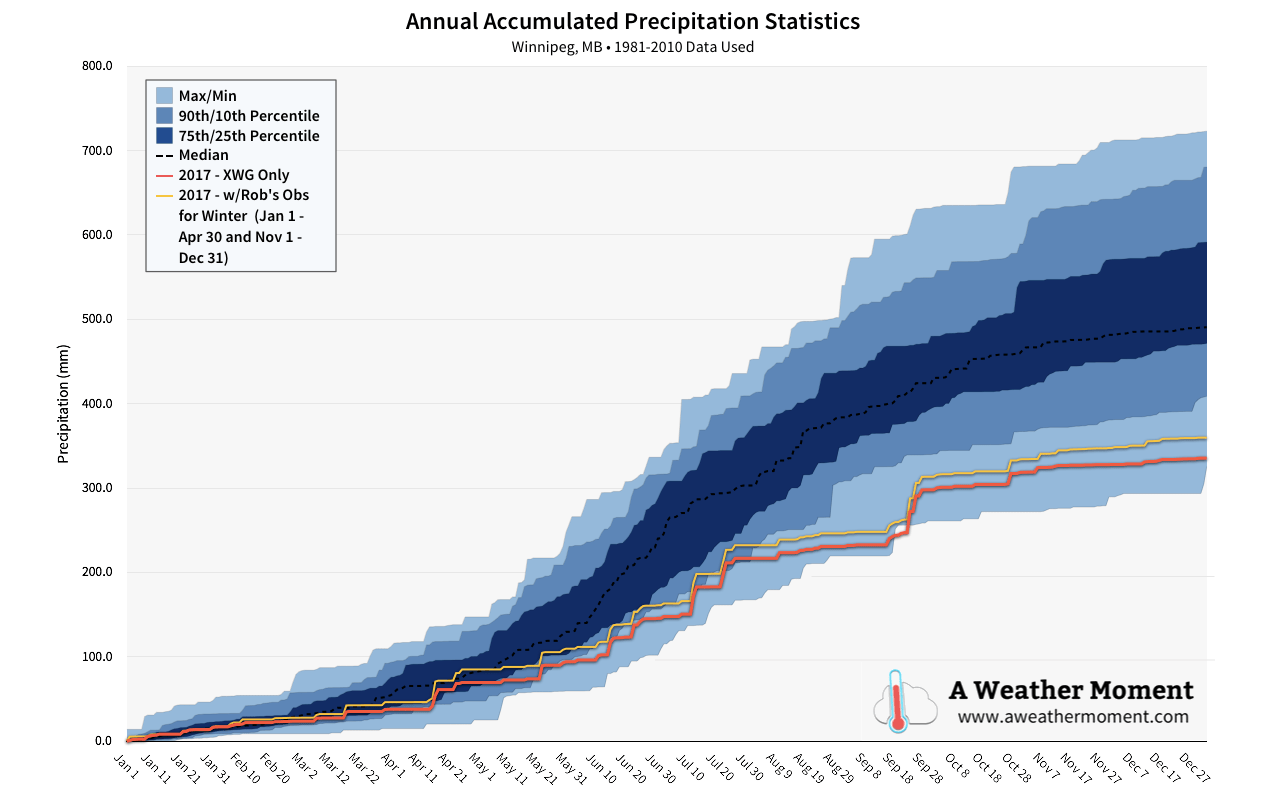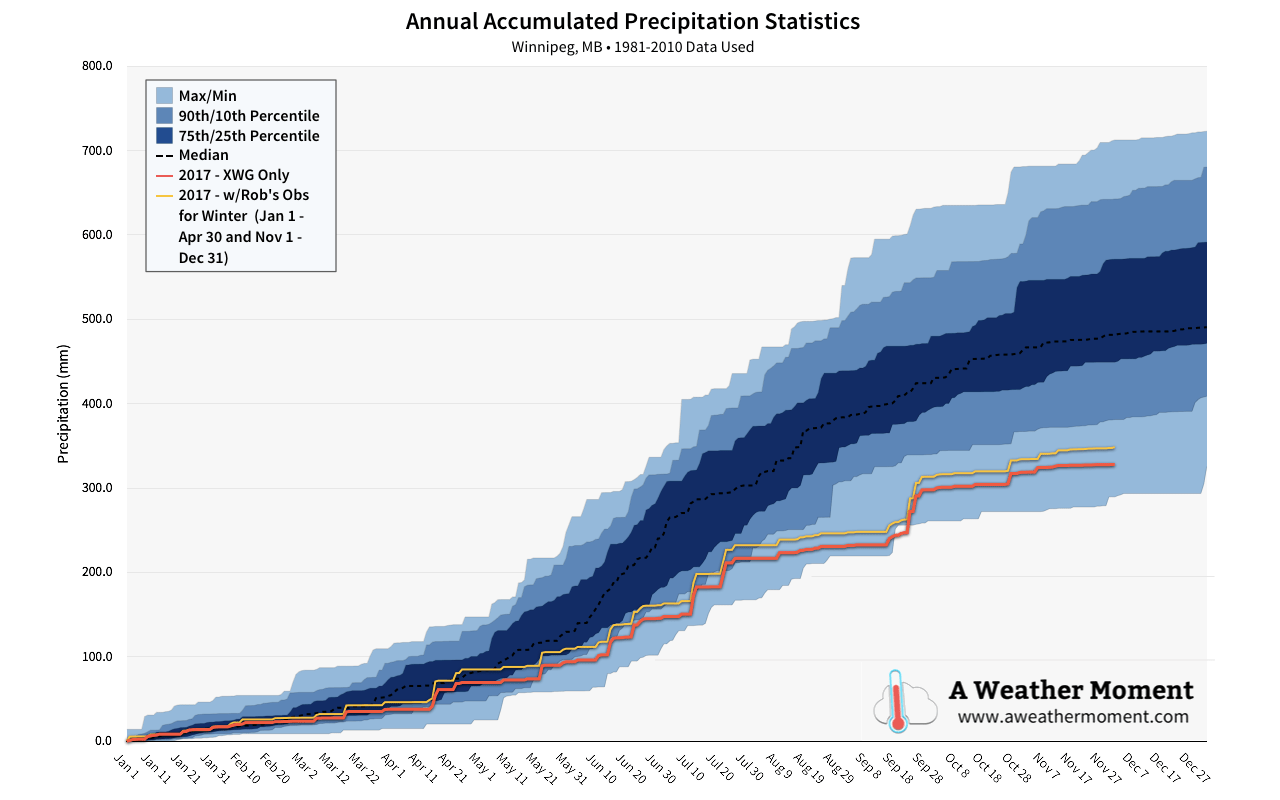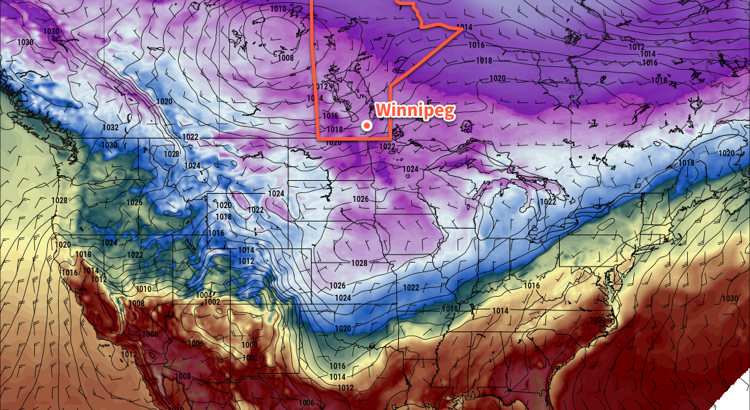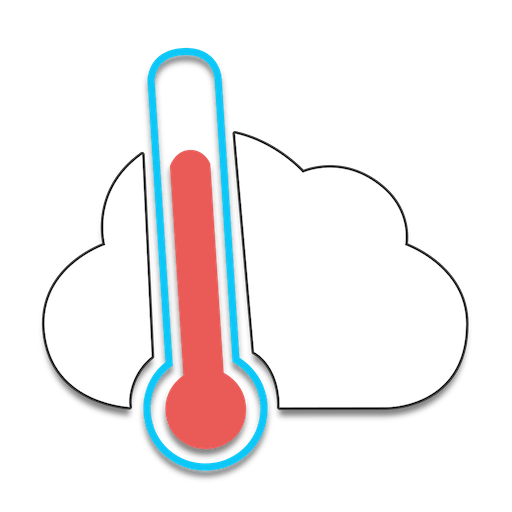Winnipeg will embark an on a windy climb to well above-seasonal temperatures by Wednesday, but the warmth will be short-lived as Arctic air comes crashing back southwards for the second half of the week.
Winnipeg will see cool temperatures today under sunny skies as a ridge of high pressure moves off to the southeast and out of the region. Winds will be out of the southwest at 20 km/h for much of the day, then strengthen to 30 km/h this evening. That wind will produce wind chill values of -25 to -30, so that cold will have a bit of bite to it. Skies will remain mostly clear tonight with winds slowly climbing to 40 km/h overnight.
Tuesday will bring partly cloudy skies to Winnipeg and milder temperatures, but the wind will be the main story for the day. As the pressure gradient tightens up between a low pushing southwards out of the Arctic and the departing high, winds will strengthen further on Tuesday to as high as 50 gusting 70 km/h out of the south. Those winds will make the day’s high near -6°C a whole lot less pleasant than it would otherwise be. Some local blowing snow is also possible, but likely in the usual trouble spots in rural portions of the Red River Valley. The cloud will thicken up on Tuesday night with temperatures dipping to just 8 or 9°C.
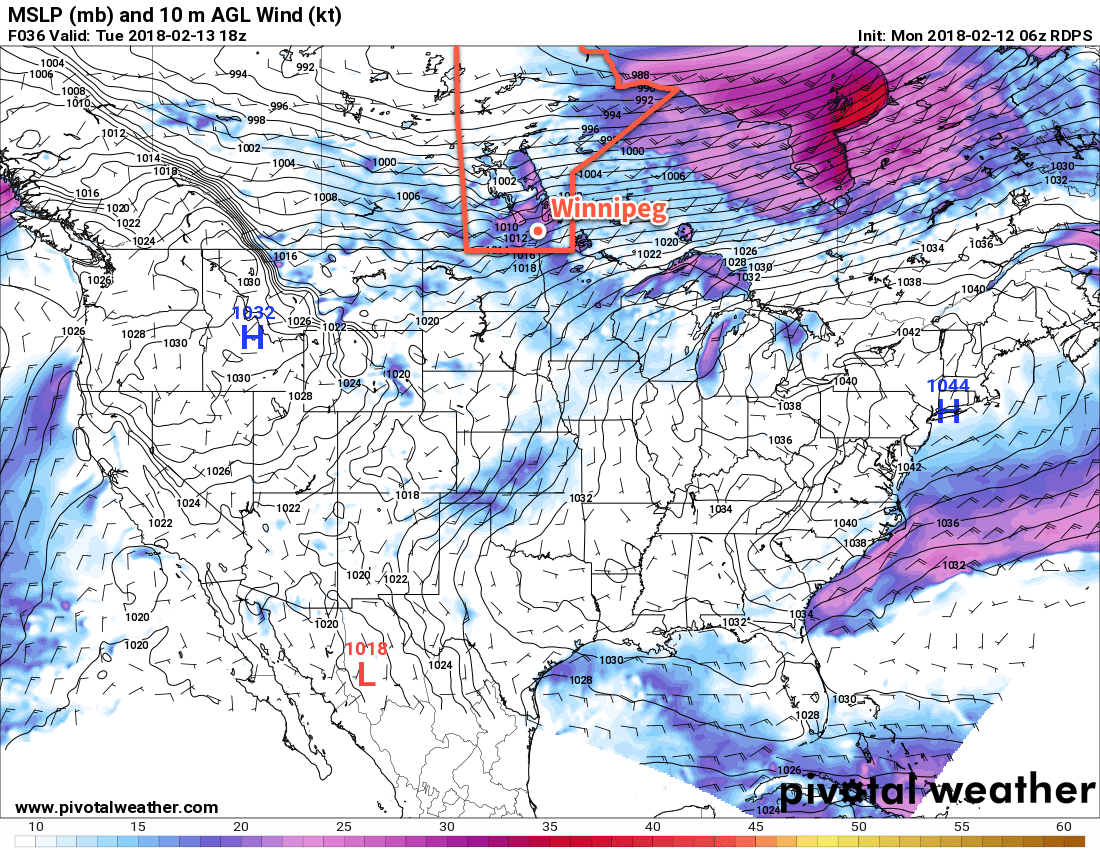
Wednesday will bring the warmest conditions of the week as very mild Pacific air moves through the region and pushes temperatures up to around -1°C. The warmth will be short-lived though; winds will shift out of the northwest in the afternoon as the first of two cold fronts swings through. The cold front associated with the Pacific air mass will push through midday, followed by the Arctic cold front in the evening. This will send temperatures from their high of -1°C sometime Wednesday morning plummeting to a low near -26°C on Thursday morning. Wind chill values will also begin to approach the -40 mark on Wednesday night, so extreme cold warnings may make another appearance across the region.
Other than the temperatures, Winnipeg will see cloudy skies on Wednesday with a slight chance of flurries in the afternoon, after the Pacific cold front swings through. That slight chance will continue through the evening hours. No notable accumulations are expected.
Long Range Outlook
The overall long-range pattern continues to be dominated by the position of the polar vortex. With the passage of Wednesday’s system, it will shift westwards from Baffin Island towards Southampton Island, shifting the core of coldest air into the Kivalliq region of Nunavut, along the western shores of Hudson Bay. As long as the polar vortex remains in that location, colder-than-seasonal weather will be the norm as the vortex maintains a northwesterly flow aloft that makes it easy to tap into all the cold air and spread it southwards over the Prairies.
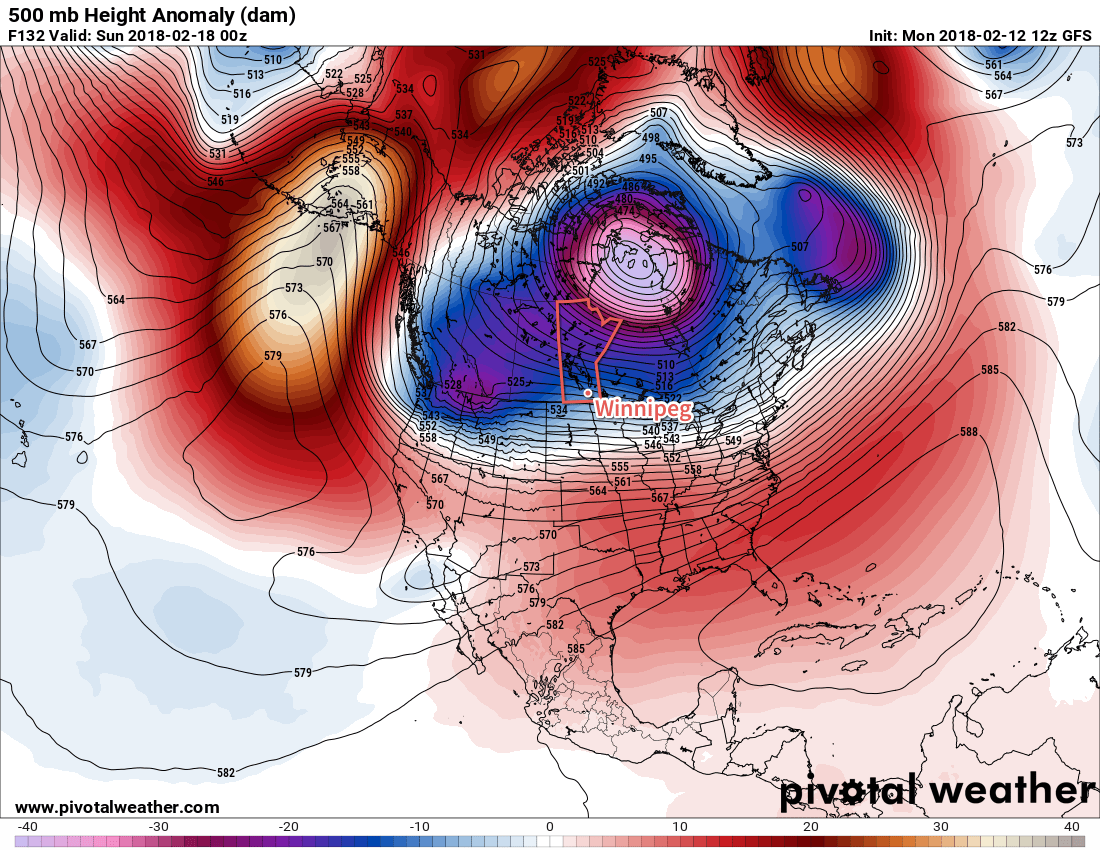
Early indications are that temperatures may return to above-seasonal late this week as another low pressure system moves through the region, bringing with it a chance for some accumulating snow, but then the cold air crashes back southwards behind the low. The colder air looks like it will remain in place for much of next week.
Winnipeg’s seasonal daytime high is currently -8°C while the seasonal overnight low is -19°C.
